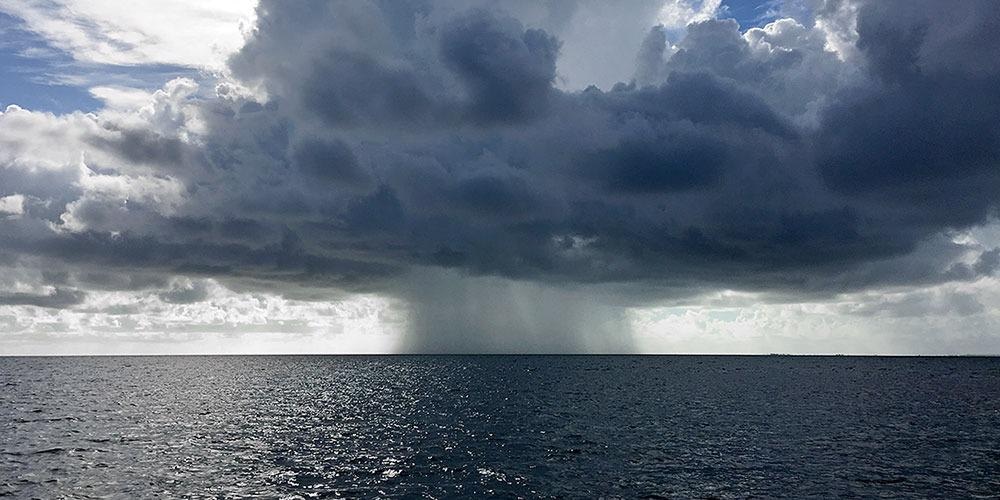Industries emit mercury into the air, which first enters the sea. Then, it makes its way into the food chain. Currently, a new study by the University of Basel has shown how the harmful substance initially enters seawater.
 Only about half of the mercury in the oceans comes from precipitation. The other half enters the sea via gas exchange. Image Credit: Brian Cook/Unsplash.
Only about half of the mercury in the oceans comes from precipitation. The other half enters the sea via gas exchange. Image Credit: Brian Cook/Unsplash.
As per previous assumptions, this process does not happen through rainfall but instead involves gas exchange. Thus, efforts to decrease mercury emissions could come into effect faster compared to what was thought earlier.
Annually, 2,000 metric tons of gaseous mercury are being discharged into the air by mining activities and coal-fired power stations. Moreover, the harmful substance adopts numerous chemical forms as it spreads between the air, water and soil in a complicated cycle.
Mercury is considered to be especially hazardous in the sea, where it tends to collect in fish in the form of highly poisonous methylmercury. Upon entering into the human body via the consumption of fish, it can have harmful effects on brain development in children and lead to cardiovascular diseases in adults.
It’s estimated that human activities have tripled the amount of mercury in the surface ocean since the onset of industrialization. Those are just assumptions, however, as there are no collector stations for precipitation over the sea.
Martin Jiskra, Biogeochemist, Department of Environmental Sciences, University of Basel
Chemical Fingerprint Reveals Origin
In a study published in the journal Nature, Jiskra has closed this knowledge gap in collaboration with collaborators from Aix-Marseille University, Paul Sabatier University Toulouse and the French National Centre for Scientific Research (CNRS).
Jiskra achieved this by examining seawater samples with the help of a new technique that enables scientists to differentiate whether mercury originates from precipitation or entered the sea through gas exchange. This method is called “fingerprinting” and is based on the measurement of small weight differences between naturally occurring mercury atoms, termed isotopes.
For sample collection, Jiskra took numerous boat trips on the Mediterranean Sea and collected a series of 20 L water samples at depths varying up to 1,400 m off the coast of Marseille. Further information was achieved from samples collected by research vessels in the North Atlantic.
Gaining a Better Understanding of the Mercury Cycle
In contrast to previous assumptions, the examinations disclosed that only around half of the mercury in the sea originates from precipitation, whereas the other half enters the oceans as a result of the uptake of gaseous mercury.
At present, the contribution due to precipitation is probably overestimated.
Martin Jiskra, Biogeochemist, Department of Environmental Sciences, University of Basel
Rather, Jiskra suspects that mercury uptake by plants pushes more of the heavy metal to be deposited on land. There, it is safely sequestered in soils and causes less risk to humans.
Furthermore, Jiskra notes that the new findings are essential for the implementation of the Minamata Convention of 2013, whereby 133 countries were committed to decreasing mercury emissions.
If less mercury enters the sea via rainfall, a reduction in emissions could cause mercury levels in seawater to drop faster than anticipated.
Martin Jiskra, Biogeochemist, Department of Environmental Sciences, University of Basel
Journal Reference:
Jiskra, M., et al. (2021) Mercury stable isotopes constrain atmospheric sources to the ocean. Nature. doi.org/10.1038/s41586-021-03859-8.